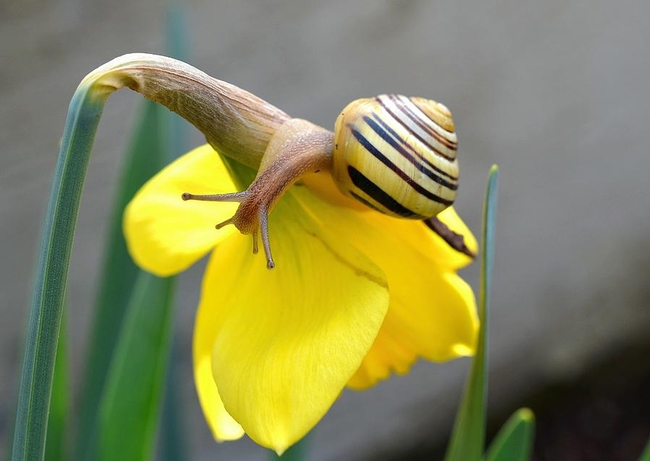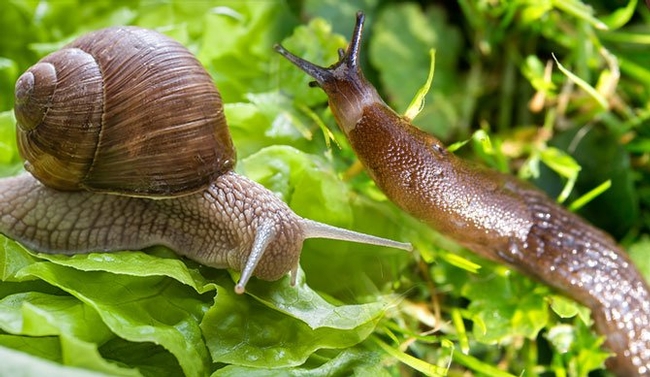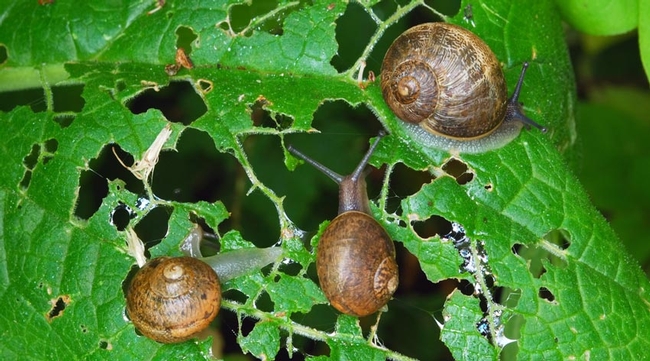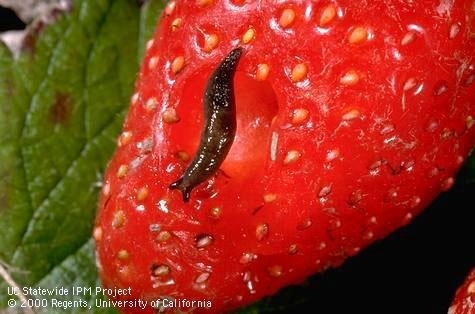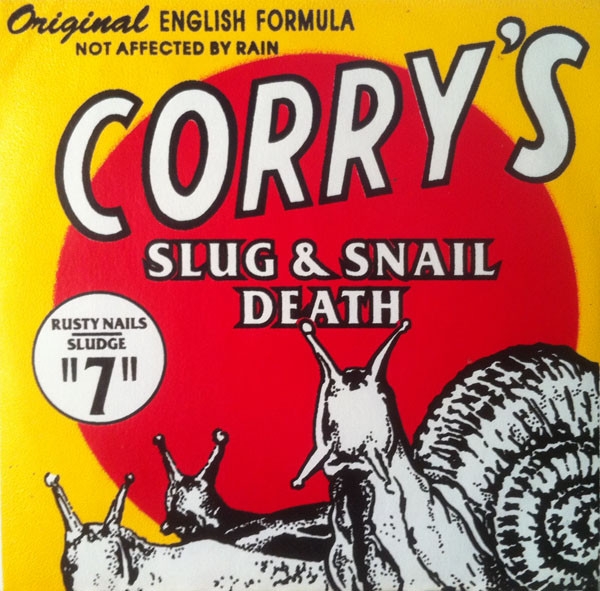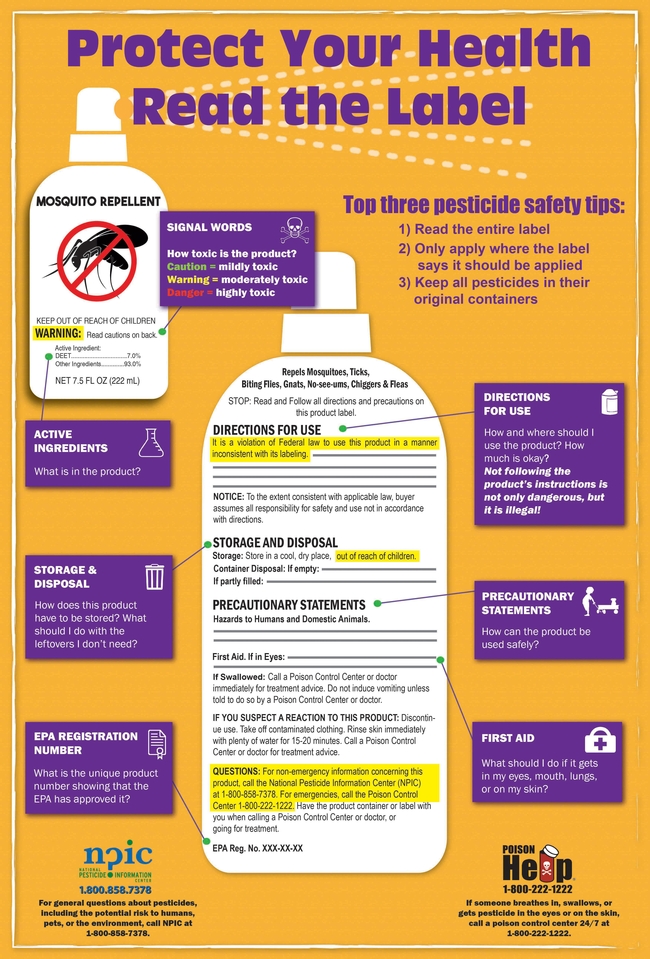By Cindy Watter, UC Master Gardener of Napa County
Snails and slugs never gave me trouble when I lived in the country because my hippie neighbors had a dozen ravenous geese that used to waddle over and gobble up the slimy little morsels. However, after I left that house and moved into town, I spent my tenth wedding anniversary date night plucking hundreds of the creatures off twelve dozen King Alfred daffodils and dropping them into a bucket of beer. Everyone told me that was the non-toxic way to do it. No one told me not to dump them in the compost pile, however. Lesson learned.)
Early spring is the time of year when snails and slugs appear. They love to chew on tender young foliage. If your garden suddenly displays leaves with holes and ragged edges, chances are you have slugs and/or snails. They hide in the cool damp areas of your yard and come out at night to do their work.
A patch of ivy or weeds or a collection of overturned flowerpots is a perfect habitat for them. You should leave a few leaf piles in your yard to promote biodiversity, but some tidying up can fix your problem. You can also capture them by propping a board on cleats to create a nesting place for them to hide in. Then you drop them in a jar of soapy water.
Or you could sprinkle finely ground diatomaceous earth around the roots of your plant or encircle plants or raised beds with copper strips. The diatomaceous-earth granules are uncomfortable to snails and they just don't like crossing copper at all.
You may also put out jar lids at night filled with beer to drown them. Don't use salt; it will hurt your plants. Make sure you have a space between the trunk of the plant and mulch, to make it harder for the snails to hide. If you must use commercial bait, find one made with iron phosphate. Baits containing metaldehyde are dangerous to pets and children.
Slugs and snails are gastropods, invertebrates that are part of the mollusk family. They have a round mouth, called a radula, with hundreds of tiny teeth that rasp and tear soft young leaves.
These creatures also act as nature's scavengers, removing all sorts of debris from forest and field. They have a purpose, but you don't want them destroying your plants.
The only real difference between a slug and a snail is the shell. Management is the same for both.
The brown garden snail (Cornu aspersa) is not native to North America. It comes from Europe and was brought here by well-meaning people who thought that escargots would become a popular food item. Alas, the snails escaped and became garden nuisances. Gourmets consider them a delicacy, and snails do appear on menus in the Napa Valley. However, most people think of these creatures as pests.
They look festive when they come out after a rain, and I should harden my heart and squash them then and there, but I don't. I keep hoping the birds will eat them.
Years ago, when there was a chemical solution for every problem, I stormed down to my garden store with murder in my heart. Snails had eaten my strawberries. I saw a box with an arresting brand name, promising “SLUG AND SNAIL DEATH.”
The package had a terrifying illustration that looked like a stone lithograph, printed on yellow cardboard. It featured three creatures—two slugs in the background and a snail in the foreground—with horns rampant, and the snail had an aggressive-looking frill on its front. These horrific invaders were so large they held their own against the background, a post-apocalyptic vermilion sun. I grabbed the box. Salvation was at hand.
And then I read the label in the lower left corner. (You should always do this, by the way.) It said: "Keep out of reach of children. CAUTION: This pesticide may be fatal to dogs or other pets if eaten. Keep pets out of treated area." So I went back to hand picking, because I had small children then.
The poison was metaldehyde. I have used iron phosphate bait but, unfortunately, my dog finds it attractive. (It smells like dried blood.) It doesn't hurt her, but it unnerves me. I will try diatomaceous earth.
I also have plenty of plants snails won't eat. Geranium, rosemary, lavender, California poppy and fuchsia don't attract them. Basil does, however.
I was discussing my pest-control quandary with an old friend, who told me I would no longer want to kill snails after I read The Sound of a Wild Snail Eating by Elizabeth Tova Bailey. I am sure that is true. Reading this book will make me feel better about the holes in my brugmansia leaves.
Find UC IPM Pest Note for Snails and Slugs here:
http://ipm.ucanr.edu/PMG/PESTNOTES/pn7427.html
Find UC IPM Quick Tips for Snails and Slugs here:
http://ipm.ucanr.edu/QT/snailsslugscard.html
Food Growing Forum: Second Sunday of the month through November. Sunday, March 14, 3 pm to 4 pm: “Fertilizers and Soil Health.” Register to get Zoom link: https://bit.ly/3r5bgwi
Workshop: UC Master Gardeners will lead a workshop on “Growing Tasty Tomatoes” on Saturday, March 27, from 10 a.m. to noon.” Register to get Zoom link:
Napa Library Talks: First Thursday of each month. Thursday, April 1: “Gardening on a Shoestring.” Register to get Zoom link: https://bit.ly/3rn3MF3
Got Garden Questions? Contact our Help Desk. The team is working remotely so please submit your questions through our diagnosis form, sending any photos to mastergardeners@countyofnapa.org or leave a detailed message at 707- 253-4143. A Master Gardener will get back to you by phone or email.
For more information visit http://napamg.ucanr.edu or find us on Facebook or Instagram, UC Master Gardeners of Napa County.
Attached Images:
